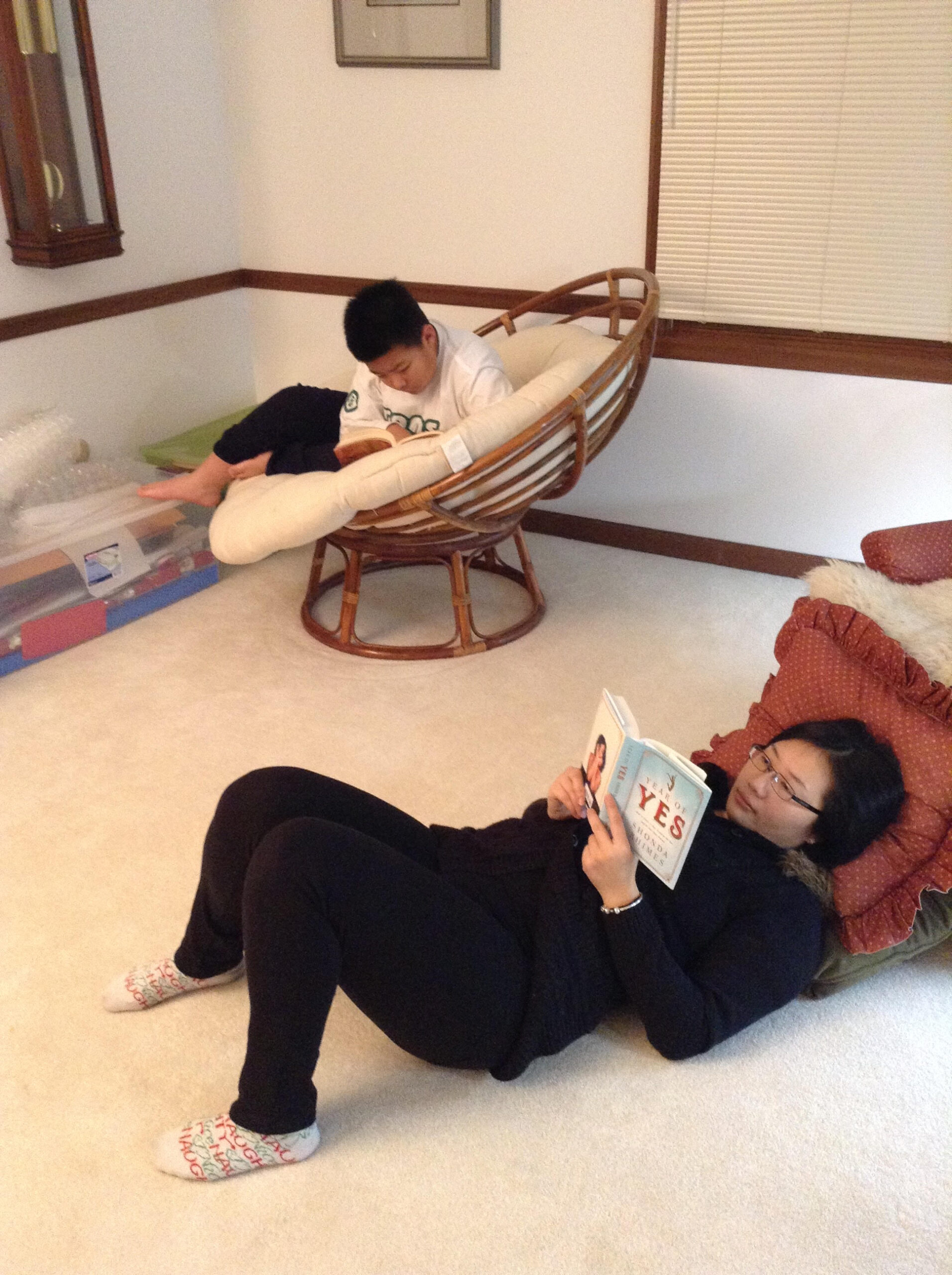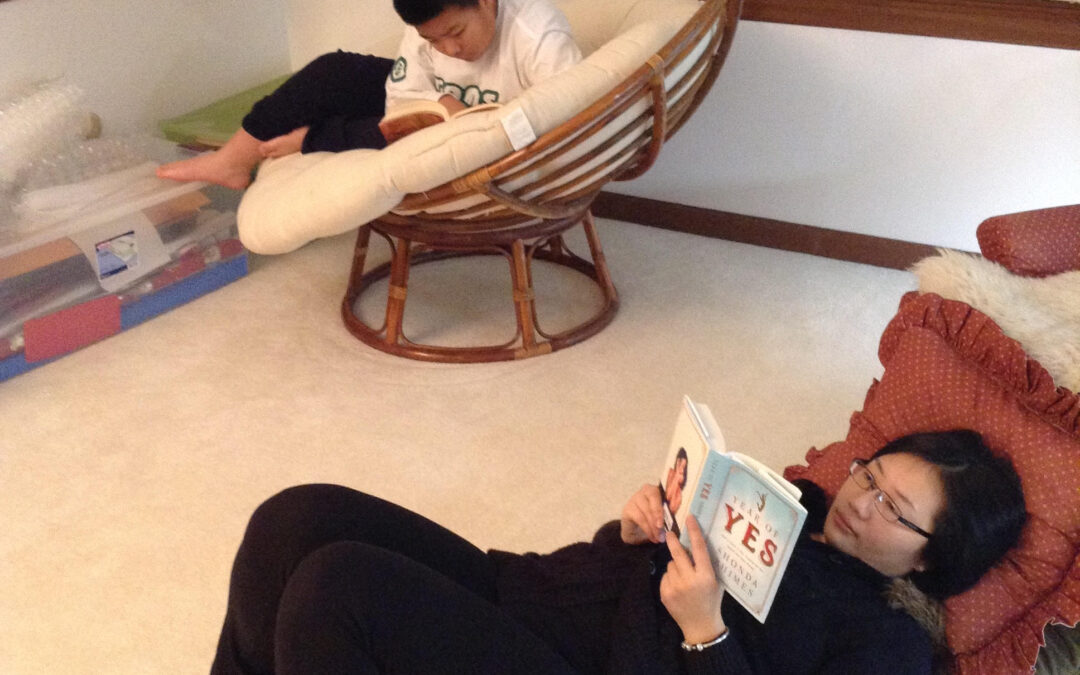Hi everyone! Ms. Chiou here.
I want to share some tips on how to get kids to read. One of the most common questions we hear from parents is “What else can my son or daughter be doing?” And the answer is always – “Read!”
The following opinion might be an unpopular one, but kids don’t have to love to read. Reading can simply be something the kids do every day, like showering or brushing their teeth. If they love doing it, great! If not, it’s still okay. The key is to get them to do it every day.
Here are some tips to get kids reading:
1. Set an example
In the first picture, you can see my cousin and I reading in the same place at the same time.
My cousin was visiting me for Christmas, and his mom packed the first Harry Potter book in hopes I could force him to read it. I got him to read, not by forcing him, but by reading in front of him all the time. There wasn’t much to do during Christmas break. Our days were spent having breakfast, lunch, and dinner with nothing much happening in between. He watched me reading book after book in various bad postures that would lead to immense lower back pain. He eventually picked up his Harry Potter and sat in the family room to read.
I understand your schedule is hectic; work and family duties can spin you in a million directions, but kids need us to set an example for them. If we’d like them to read, we have to show them it is doable. They would never sit down willingly and read when they never see anyone else doing it. Therefore, you should pick up a book or a magazine and set the example they need.

2. Have a variety of reading materials
Graphic novels, fantasy, realistic fiction, and informational texts are all great genres for kids. Have them alternate between these genres. The library we have at Englist is a great free source. There are also some other sources worth checking out.
- Taipei Teen Tribune (there are tons of articles by Taiwanese students)
- Oxford Owl (need to register to read free e-books)
- DOGO News (news website for kids, this is great to expand knowledge)
- TIME for Kids (news website for kids, this is great to expand knowledge)
- News for Kids (Teacher Will Adams created NewsForKids.net in 2018 to create a safe and trustworthy news site for kids that was easy to understand)
- Kid Spirit Explore section (this is the section where teenagers from all over the world submit their writings)
It’s also important to limit screen time, so printing articles can help.

3. Create a designated reading area
Having a cozy spot just for reading will help set the intention and form a habit — not to mention a great space to wind down after a long day. I moved into a temporary apartment about six months ago. It is quite small, but I still managed to make myself a reading nook in the living area. In the second picture, you can see the books I’ve lined up for me to read, tea, and treats. I’ve also laid down a comfy rug for the winter.
Look for a corner in your home and turn it into your kids’ reading nook. String up some fairy lights, decorate it with their favorite book characters (Google and color print at 7-11), and finish it up with some comfy pillows and blankets. You can even snuggle up to them and read your own things — make it a family time.
4. Ease their anxiety
For a lot of students, finishing a whole book, especially in their second language, can be daunting. Here are some ways to help:
- Provide them with a cell phone with screen time limit for them to look up definitions of words.
- Mark the pages you think they should be reading each day with post-it notes (as seen in picture 3). This will help them see that it’s really not as many pages as they think. Please only mark around 10 pages in a novel with no pictures at the beginning.

5. Use encouragement, not threats
Be positive when you engage in conversations with the kids regarding reading. Make it an invitation to do something cool. Avoid saying things like, “Do you see how other kids are reading?” “Your English is bad because you don’t read.” “I bought you so many books, so why don’t you read?”
Instead, try “Hey, I want to turn off the TV and my phone to read for a bit, come join me!” “My friend recommended this magazine to me, I’d love some company while reading.” “The book you checked out from Englist looks really cool – can you read it and tell me what it’s all about?”
All of the tips above are just to get them started. Some might work, and some might fail — and that is A-OKAY. Be patient and gentle, not just with them, but with yourself. And as always, let me know how else I can assist.
– Mel Chiou
